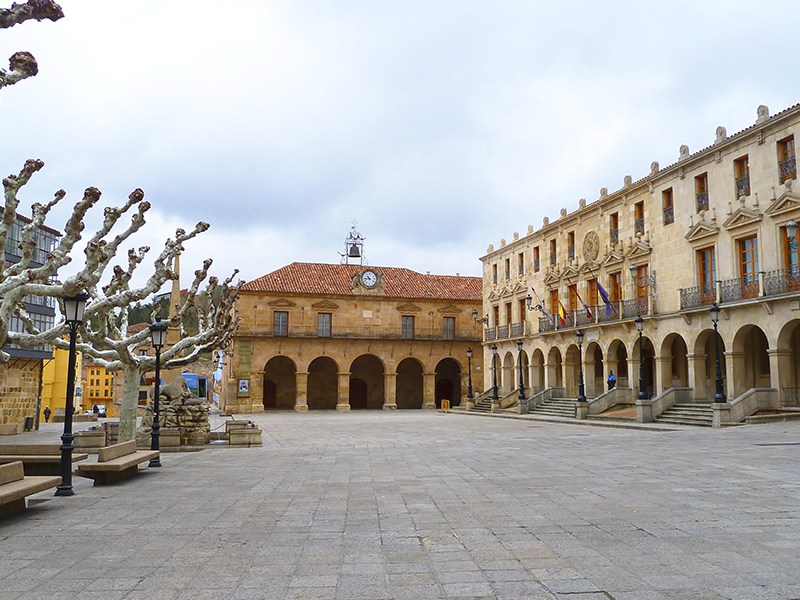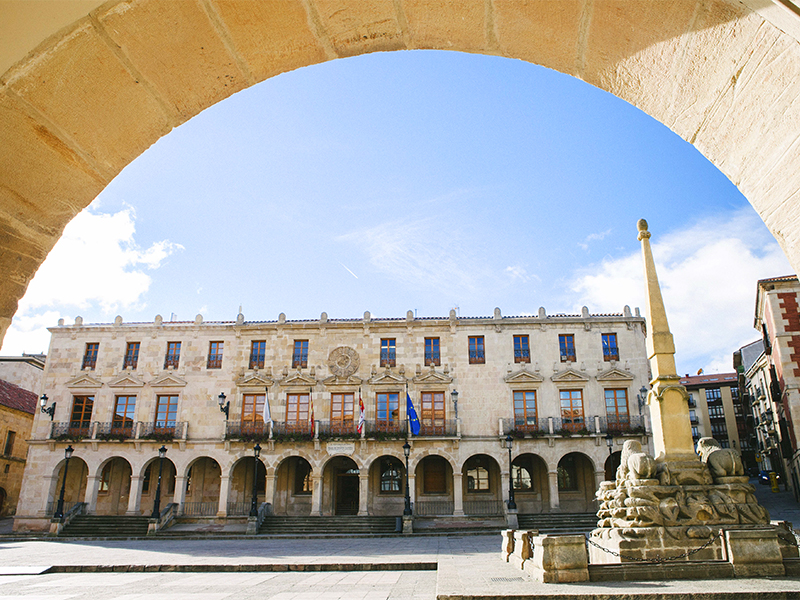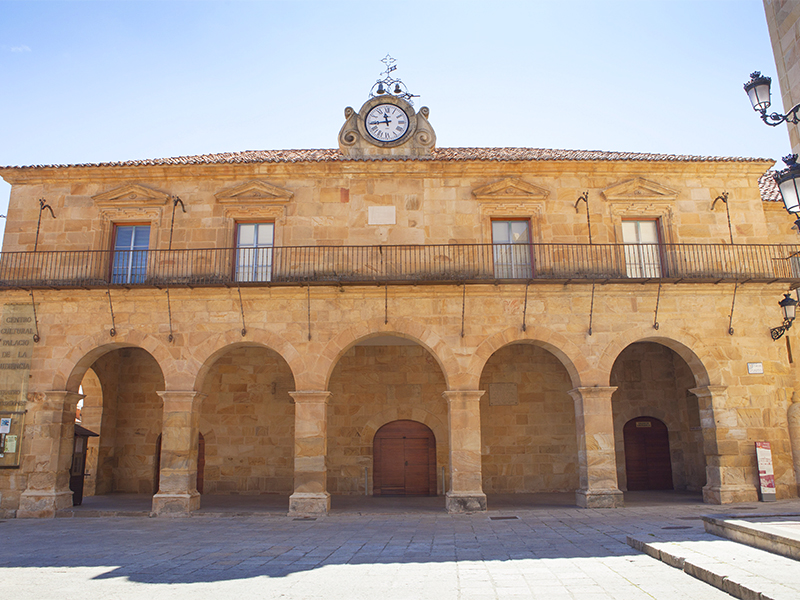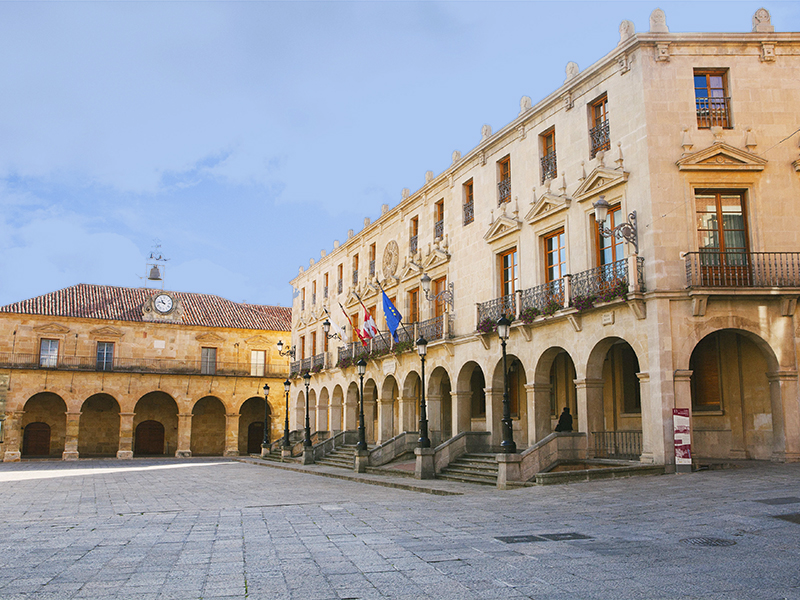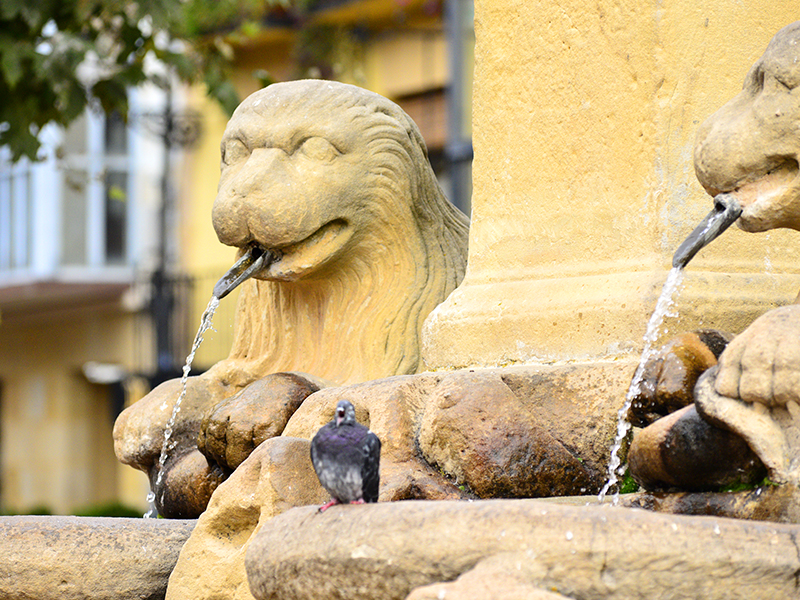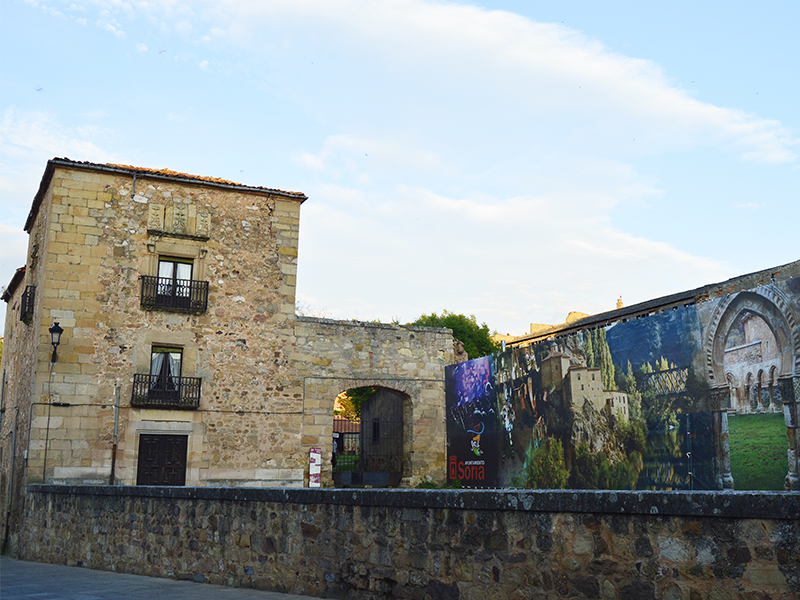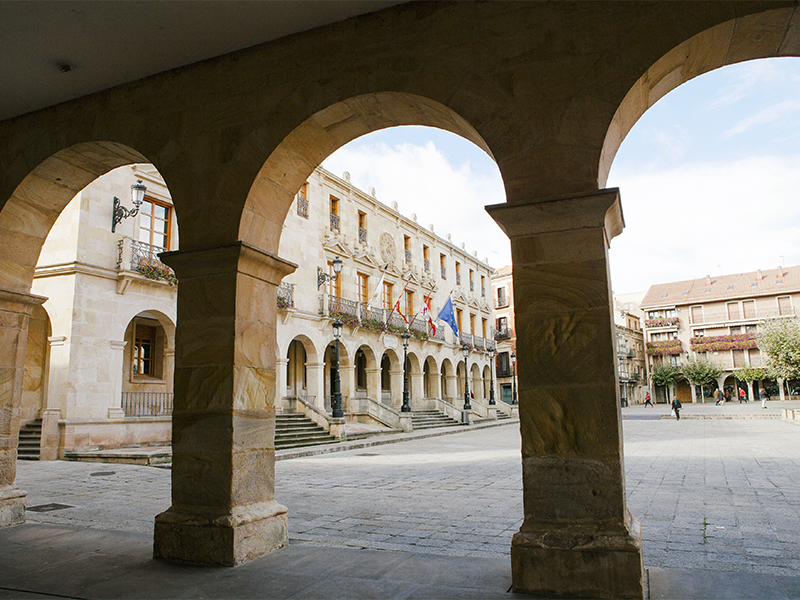PLACE MAYOR
REPÈRE DE LA VILLE ANCIENNE ET CONTEMPORAINE
Référence de la ville ancienne et de la contemporaine avec des bâtiments remarquables:
Palais de la Audiencia: Aujourd’hui est un Centre Culturel. Est un bâtiment néoclassique du XVIIIe siècle bien que son origine remonte deux siècles avant, quand une ville en expansion construisait la mairie et la prison.
Maison des douze lignages (actuel hôtel de ville): Le grand emblème de sa façade représente les douze lignages, messieurs de la noblesse le plus puissante de la ville de Soria, qui l'a construit au XVIIe siècle comme un lieu de réunion. Avec une rez-de-chaussée avec arcs et deux étages, ce bâtiment de maçonnerie a été élargie en 1978 et 2007:
Maison de Commun (Actuellement le Archive Municipal): Au XVIe siècle, les jurés représentants des districts de la commune a transféré son siège dans un bâtiment en face de la Maison des douze lignages. En face de lui, vous pouvez voir la fontaine des Lions, construite à la fin du XVIIIe siècle, dont l'emplacement a changé plusieurs fois tout au long de son histoire.
Palais de Doña Urraca: A quelques mètres de la Plaza Mayor, également connu sous le nom de Palais Sorovega. Bâtiment du XVIe siècle, seulement est visible la tour rectangulaire, qui doit être entouré par des murs en pierre crénéle. Il était l'atrium de bienvenue de Sainte Thérèse, où le saint évêque lui avait donné sa bénédiction.
PALACIO DE LA AUDIENCIA
Symbol of the city growth on the 16th century
The building, neoclassic, impressive and sober of rectangular floor plan, has a wide portico supported on huge pilasters upon which are supported 5 round archs which at the same time support the main floor with an adjoining balcony to six clearances embellished with pediments. The building hosted the Council, the Court and the Royal Prision in the basement. Nowadays, it is the Palacio de la Audiencia Cultural Centre where you can watch exhibitions, theatre plays, concerts, conferences...
It stands out a big clock installed in 1.862 with a forge metallic ensemble that supports bells, one of which dates from the 16th century and still today marks the time. Antonio Machado gave the building a poetic touch referring to it in one of his poems:
| Open for temporary exhibitions or cultural events.Link Agenda Monday through Saturday: 19:00 to 21:00 h. Sundays and holidays: Closed. |
|
| FREE | |
| 975 234 114 | |
| Centre-Ville | |
| Places Machadiennes |
House of the 12 lineages (current city council)
The building, is a perfect example of the civil architecture of Soria in the 17th century, of relevant simplicity and pot herrerian style, made of ashlar, with a ground floor with porticoes and two superior floors with balconies on the first one and wide windows on the upper one. The balconies are crowned with pediments on top of which we can see balled pyramids. Between the windows of the third floor there is a huge lineages shield, flagship of the Institution in which the knights of the 12 lineages and their weapons are represented. In the centre of the shield appears, acording to some sources criteria, the figure of King Alfonso the 8th, given that it appears without the crown; maybe because the king gave some privileges to the knights before his death.
| Monday to Friday from 09.00 to 14.00 h.Weekends and holidays closed. | |
| FREE | |
| 975 234 100 | |
| Centre-Ville | |
| Templar Et Chevaleresque |
House of the commons or of the common folk(current Municipal archive)
The voice of the people on the medieval Soria
The building is set on an arch, known as the Arch of the Horn given that there is one into the ceiling recalling the ancient bullfights celebrated in the Main Square for which the arch worked as the entrance door for bulls into the bullring. It is made of ashlar originally with two floors to which a third floor was added on the 20th century. On each of them three big openings are opened with round arch.
It started having different uses for which different remodeling were done since the 18th century: House of Weight were balances were calibrated, Police and Firefighters headquarters, House of culture, place for the rehearsals of the Local Music Band and nowadays Municipal Archive.
| Monday to Friday from 09.00 to 14.00 h.Weekends and holidays closed. | |
| FREE | |
| 975 232 868 | |
| Centre-Ville |
Palace of Doña Urraca or Palace of Sorovenga
Very close to the main square we can find this palace transformed on the 16th century and destroyed on a fire in 1603, from where the saint Bishop welcomed the Santa Teresa de Jesús procession at her arrival to thecity of Soria the 2nd of June 1581, giving them his blessing.
| FREE (only outside building) | |
| 975 232 868 | |
| Teresian route | |
| Centre-Ville | |
| Brochure: "Teresa`s footprints" |
House next to City Hall
A good example of the architecture of the seventeenth century
From the late sixteenth century built in sturdy ashlar stone emblazoned with elaborate and bars on the windows. Among the openings are two big shields with helmet, crest and stars. Today it is a private house.
Lion's fountain
The travelling fountain
Right in the centre of the Main Square, halfway between the 12 lineages House and the Commons house, we can see this decorative fountain, one of the most emblematic fountains in the city. It counts with a wide platform of irregular dimensions upon which are supported two piles that spill water through the heads of beasts with a pipe. Above them, two sitting lions empty the above-mentioned piles.








